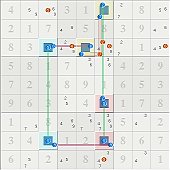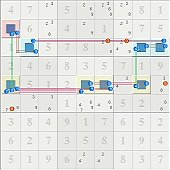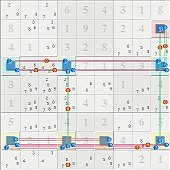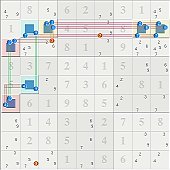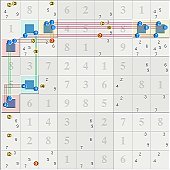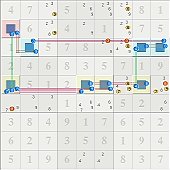I wasn't aware of the multi-inference restriction. To be honest, I'm not sure I understand what that even means. But then I've just started investigating Kraken structures, and most of the examples are fish-like patterns so I'm pretty unclear on the hallmark traits of a Kraken deduction right now. I was paying homage to Aran's suggestion
Aran wrote:One could then call anything which requires a chain to establish either or both RCDs as a Kraken Dual-linked ALS (in line with use of that term in other contexts).
Your re-statement of the ALS chain as a continuous nice-loop is a point that I've conceded before. Although NL discovery is a vastly different process (for me) from ALS chain discovery, once discovered, it really doesn't much matter what you call it or how it was found. The eliminations speak for themselves.
Cheers,
Paul
"What's in a name? That which we call a rose
By any other name would smell as sweet."


